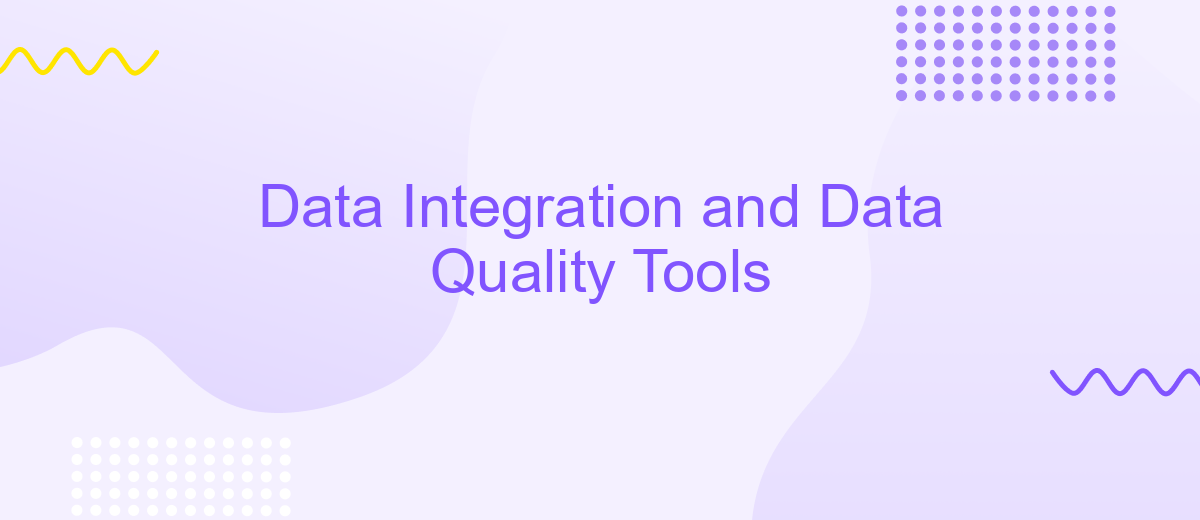Data Integration and Data Quality Tools
In today's data-driven world, the seamless integration and maintenance of data quality are paramount for informed decision-making. Data integration and data quality tools play a crucial role in unifying disparate data sources and ensuring the accuracy, consistency, and reliability of data. This article explores the essential features, benefits, and best practices for leveraging these tools to enhance business intelligence and operational efficiency.
Introduction
Data integration and data quality tools have become essential in today's data-driven world. These tools ensure that data from various sources is seamlessly combined and maintained at high quality, enabling businesses to make informed decisions. Effective data integration and quality management can lead to improved operational efficiency, better customer experiences, and enhanced decision-making capabilities.
- Data Integration: Combining data from different sources into a unified view.
- Data Quality: Ensuring the accuracy, completeness, and reliability of data.
- Automation Tools: Utilizing services like ApiX-Drive to streamline integration processes.
ApiX-Drive is a powerful tool that simplifies the integration of various applications and services, making it easier for businesses to manage their data flows. By automating these processes, ApiX-Drive helps maintain data quality and reduces the risk of errors. As businesses continue to rely on data for strategic decisions, the importance of robust data integration and quality tools cannot be overstated.
Data Integration Tools

Data integration tools are essential for combining data from various sources into a unified view, ensuring seamless data flow across an organization. These tools facilitate the extraction, transformation, and loading (ETL) processes, enabling businesses to consolidate data from different databases, applications, and systems. By doing so, organizations can achieve a holistic view of their data, improve decision-making, and enhance operational efficiency.
One notable example of a data integration tool is ApiX-Drive. This service simplifies the integration process by offering a user-friendly interface that allows users to connect various applications and automate data transfers without requiring extensive technical knowledge. ApiX-Drive supports numerous platforms and provides real-time synchronization, ensuring that data remains up-to-date across all connected systems. Such tools are invaluable for businesses looking to streamline their data workflows, reduce manual efforts, and maintain data consistency.
Data Quality Tools

Data quality tools are essential for ensuring that the information used within an organization is accurate, consistent, and reliable. These tools help identify and rectify errors, inconsistencies, and redundancies in data, which can significantly impact business decisions and operations. By leveraging data quality tools, businesses can maintain high standards of data integrity and improve overall efficiency.
- Data Profiling: This involves analyzing the data to understand its structure, content, and quality. Tools like Talend and Informatica offer robust data profiling capabilities.
- Data Cleansing: This process involves correcting or removing inaccurate records from a dataset. Tools such as Trifacta and OpenRefine are widely used for data cleansing tasks.
- Data Matching: This helps in identifying duplicate records and merging them to create a single, accurate dataset. Tools like IBM InfoSphere QualityStage and SAS Data Quality are popular choices for data matching.
- Data Monitoring: Continuous monitoring of data quality to ensure ongoing accuracy and reliability. Tools like Ataccama and DataFlux provide comprehensive data monitoring solutions.
- Integration Tools: Platforms like ApiX-Drive facilitate seamless data integration, ensuring that data from various sources is accurately combined and maintained.
Implementing data quality tools is crucial for any organization aiming to harness the full potential of its data. These tools not only enhance the reliability of data but also streamline operations, reduce costs, and support better decision-making processes. By investing in robust data quality solutions, businesses can ensure that their data remains a valuable asset.
Benefits of Data Integration and Data Quality Tools

Data integration and data quality tools offer significant advantages for organizations looking to optimize their data management processes. These tools streamline the consolidation of data from various sources, ensuring that information is accurate, consistent, and easily accessible.
Implementing these tools leads to enhanced decision-making capabilities, as businesses can rely on high-quality data for analytics and reporting. This, in turn, improves operational efficiency and drives better business outcomes.
- Improved data accuracy and consistency
- Enhanced decision-making capabilities
- Increased operational efficiency
- Cost savings through automation
- Compliance with regulatory requirements
One such tool, ApiX-Drive, facilitates seamless data integration by allowing businesses to connect various applications and automate workflows. This not only saves time but also reduces the risk of human error, ensuring that data remains reliable and up-to-date. By leveraging these tools, organizations can maintain a competitive edge in today's data-driven landscape.
Challenges and Considerations
Implementing data integration and ensuring data quality present several challenges. One of the primary issues is dealing with disparate data sources that may have different formats, structures, and standards. This can complicate the process of data merging and transformation, leading to inconsistencies and errors. Additionally, maintaining data integrity during integration is crucial but difficult, especially when dealing with real-time data streams and large volumes of information.
Another significant consideration is the selection of appropriate tools and services for integration. Tools like ApiX-Drive can simplify the process by offering pre-built connectors and automated workflows, thus reducing manual effort and minimizing errors. However, even with such tools, it is essential to continuously monitor and validate data to ensure its accuracy and reliability. Data governance policies and regular audits are also necessary to maintain data quality over time, addressing issues such as data duplication, incomplete records, and outdated information.
FAQ
What is data integration and why is it important?
What are the common challenges faced in data integration?
How can data quality be maintained during the integration process?
What are some key features to look for in data integration tools?
How can automation help in data integration and quality management?
Apix-Drive is a universal tool that will quickly streamline any workflow, freeing you from routine and possible financial losses. Try ApiX-Drive in action and see how useful it is for you personally. In the meantime, when you are setting up connections between systems, think about where you are investing your free time, because now you will have much more of it.

